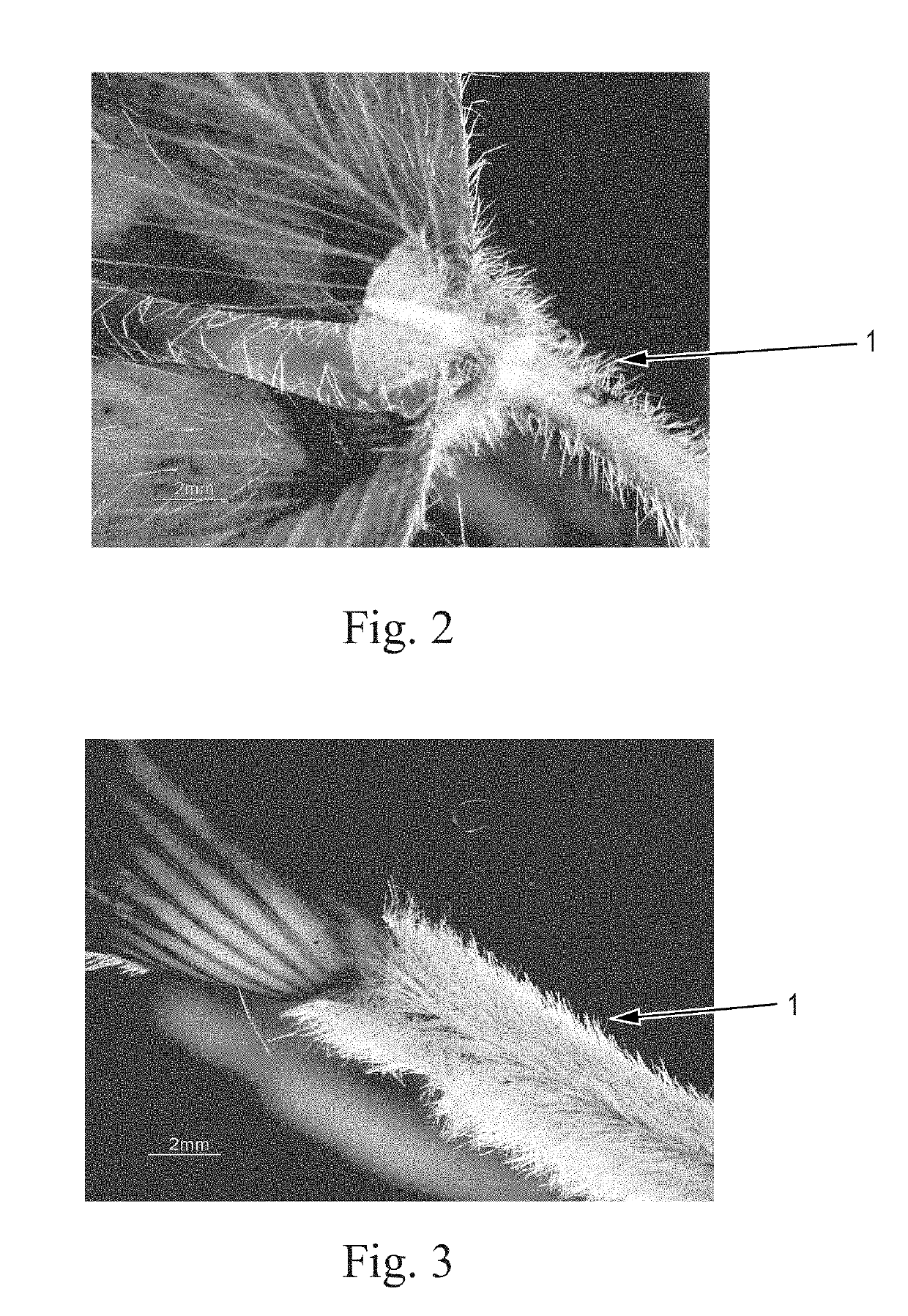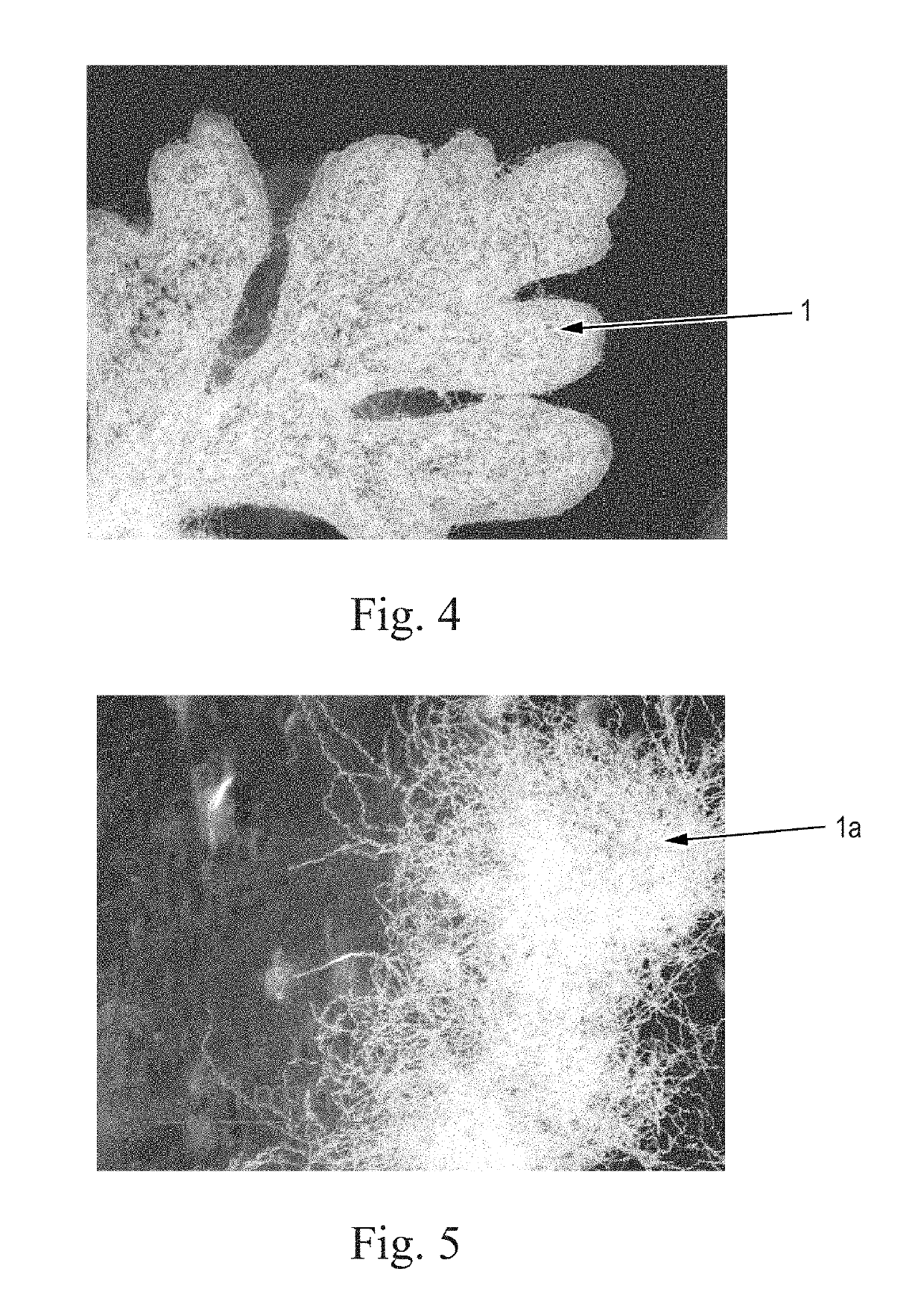Process for individualizing trichomes
a trichome fiber and individualization technology, applied in the field of individualization (separating) trichome fibers, can solve the problems of difficult to obtain “clean” individualized trichome fibers in large amounts, inconvenient operation, and inability to meet the needs of consumers of fibrous structures
- Summary
- Abstract
- Description
- Claims
- Application Information
AI Technical Summary
Benefits of technology
Problems solved by technology
Method used
Image
Examples
Embodiment Construction
Definitions
[0030]“Trichome” as used herein means an epidermal attachment of a varying shape, structure and / or function of a non-seed portion of a plant. In one example, a trichome is an outgrowth of the epidermis of a non-seed portion of a plant. The outgrowth may extend from an epidermal cell. In one embodiment, the outgrowth is a trichome fiber. The outgrowth may be a hairlike or bristlelike outgrowth from the epidermis of a plant.
[0031]Trichomes may protect the plant tissues present on a plant. Trichomes may for example protect leaves and stems from attack by other organisms, particularly insects or other foraging animals and / or they may regulate light and / or temperature and / or moisture. They may also produce glands in the forms of scales, different papills and, in roots, often they may function to absorb water and / or moisture.
[0032]A trichome may be formed by one cell or many cells.
[0033]The term “individualized trichome” as used herein means trichomes which have been artificial...
PUM
| Property | Measurement | Unit |
|---|---|---|
| temperature | aaaaa | aaaaa |
| charring temperature | aaaaa | aaaaa |
| charring temperature | aaaaa | aaaaa |
Abstract
Description
Claims
Application Information
 Login to View More
Login to View More - R&D
- Intellectual Property
- Life Sciences
- Materials
- Tech Scout
- Unparalleled Data Quality
- Higher Quality Content
- 60% Fewer Hallucinations
Browse by: Latest US Patents, China's latest patents, Technical Efficacy Thesaurus, Application Domain, Technology Topic, Popular Technical Reports.
© 2025 PatSnap. All rights reserved.Legal|Privacy policy|Modern Slavery Act Transparency Statement|Sitemap|About US| Contact US: help@patsnap.com



